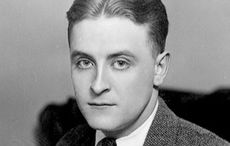A New York monument honoring Irish patriot and former Attorney General of New York State, Thomas Addis Emmet, brother of Robert Emmet, was rededicated last Thursday, October 27, as a new plaque in his memory was unveiled.
The rededication ceremony was held in St. Paul’s Chapel, on whose grounds the monument stands, and attended by several of his descendants, Irish Consul General the Hon. Barbara Jones, and the Executive Deputy Attorney General for Regional Offices, New York, Martin J. Mack, as well as a representative from the Irish family that funded the restoration.
Located at Broadway and Fulton Street in downtown Manhattan, the obelisk was erected by Emmet's friends, who took up a subscription to honor his memory just a year after his death in 1827.
Almost 200 years after it was first erected, the obelisk is still inscribed with tributes to the much-respected lawyer in Irish, English, and Latin, but with the wear and tear caused by nearly two centuries of New York wind and rain, as well as the height of the inscriptions above the ground, the words of the inscriptions themselves had become hard to read.
Eager to ensure the lasting memory of the successful lawyer and politician, a visitor from Ireland, William McCarthy, noticed the opportunity for improvements to the monument and offered the donation to St. Pauls Chapel that made last week’s rededication possible.
Although McCarthy himself was unable to travel to New York to attend the event, his niece Tamara McCarthy read a letter from her uncle in which McCarthy spoke of the important basis of the United Irishmen rebellion in 1798 and the struggle for human rights for all. Had this rebellion been successful, McCarthy wrote, it could have spared Ireland the sectarian division that emerged later.
His sentiments echoed the words of the Honorable Barbara Jones, who in her address stated that one of the great hallmarks of Thomas Addis Emmet was that he spent his life “imagining an Ireland where sectarian divisions would be overcome.” She also highlighted the Irish patriot’s popularity not just among the Irish in New York but among all those who sought equal rights, a popularity earned through Emmet’s own actions, from working to remove barriers preventing Catholics from holding office to fighting to free a slave during his very first American legal case.
Read more: Raise a glass to Robert Emmet, the Irish rebel leader executed 213 years ago
Calling it a “magical day,” the Irish Consul General remarked that we are “learning again the importance of remembering” and stated that we had much to learn from those who first erected the monument so soon after Emmett's death, those who recognized the impact he had on Irish and American life.
This impact did not come without difficulties, however. As mentioned by Executive Deputy Attorney General for Regional Offices, New York, Martin J. Mack, Emmet faced oppositin when he first attempted to join the New York bar.
“You can claim to be an American before you come to America,” Mack continued, highlighting the shared interests of Emmet as an Irish patriot with the search for justice and freedom of the newly independent United States.
“It’s important we don’t forget that,” he continued, referring specifically to the questions around immigration during this election year, “[or] we may miss out on another Thomas Addis Emmet.”
Those interested in New York history or in the history of the Irish in New York can now view a new plaque standing on the base of the south side of the Irish hero's obelisk bearing a statement about Emmet from fellow Corkman John England, the first Catholic Bishop of Charleston, SC.
Translated into Irish by Hilary Nic Suibhne, Adjunct Language Lecturer of Irish Studies at Glucksman Ireland House, NYU, the inscription reads, “He wished for prosperity for the land of his birth. He honored and was praised in the land of his death.”
Thomas Addis Emmet was born in Cork city on April 24, 1764, the elder brother of Robert Emmet, one of Ireland’s most famous republican martyrs, who was executed in 1803 for leading a rebellion in the same year.
Thomas was also a member of the United Irishmen, however, becoming their legal advisor and a member of their executive in 1797 before being arrested the following year on the eve of the 1798 rebellion.
Read more: Top 20 secret Irish landmarks in New York (PHOTOS)
On his release, he went first to Brussels, where his younger brother Robert informed him of plans for a second uprising, and it was in Paris, while in communication with Napoleon Bonaparte, that he was to learn of its failure.
After his brother’s execution, the lawyer set his sights on New York in 1804, where he joined the bar and established a lucrative practice. The firm, Emmet, Marvin & Martin LLP, still practices today and is believed to be one of the oldest companies in the United States, although the Emmet family’s involvement came to an end in 1971.
When Emmet arrived in New York, the acclaimed Alexander Hamilton was believed to be the best lawyer in the city but after Hamilton’s deadly duel with Vice President Aaron Burr, the Corkman quickly took on the mantle of leading lawyer.
He was appointed New York State Attorney General in August 1812 and despite only remaining in office until February 1813, his abilities and the services he provided continued to grow in acclaim, so much so that United States Supreme Court Justice Joseph Story declared him to be "the favorite counselor of New York."
Following his death, while conducting a case in court on November 14, 1827, Emmet was buried in St Mark's-in-the-Bowery Churchyard in New York's East Village.
The influence of his Irish American family continued to grow, however. His son Thomas was one of a group of lawyers who founded the New York Law Institute and his other son Robert was appointed to the Superior Court of the State of New York, among many other achievements.
St. Paul's underwent a restoration to mark its 250th anniversary this yeary. The restoration of the chapel was completed just a few weeks ago, redesigned under the guiding principle of returning to a look that was almost exactly like that of October 30, 1756, the day it first opened its doors.
Trinity Wall Street is currently considering renovating a further monument at St. Paul’s, that of fellow Irish patriot Dr. William James MacNeven who was known as the “Father of American Chemistry,” standing in the North St. Paul's Churchyard. Those interested in receiving updates as Trinity’s planning proceeds may contact Willem Brans, Director of Development, Trinity Church Wall Street at [email protected].




Comments